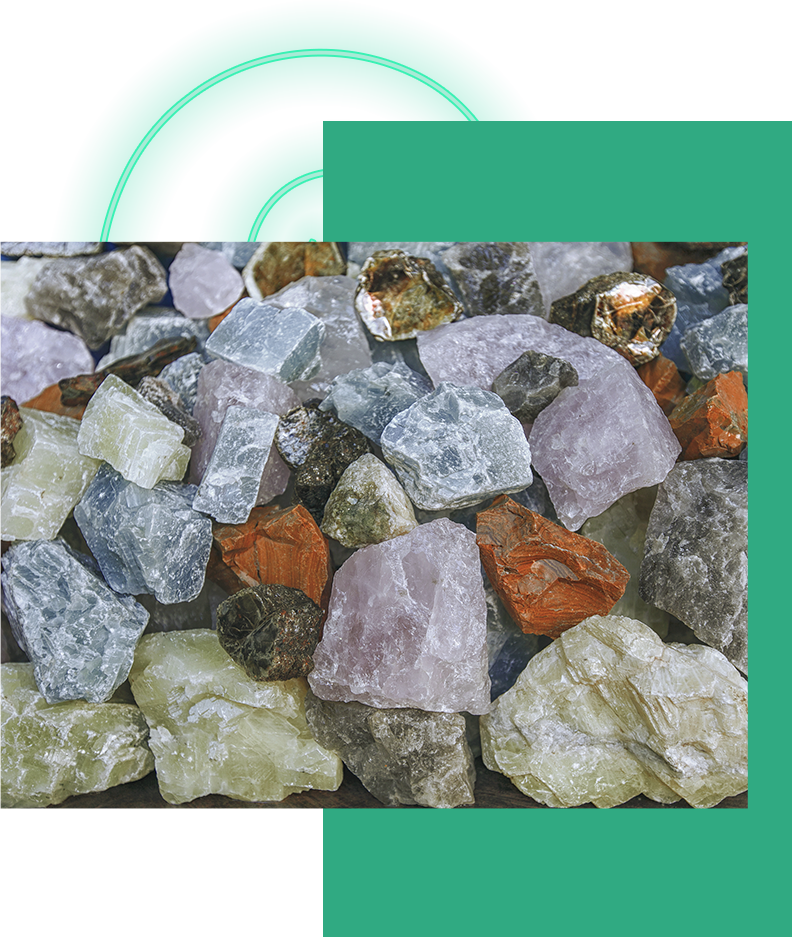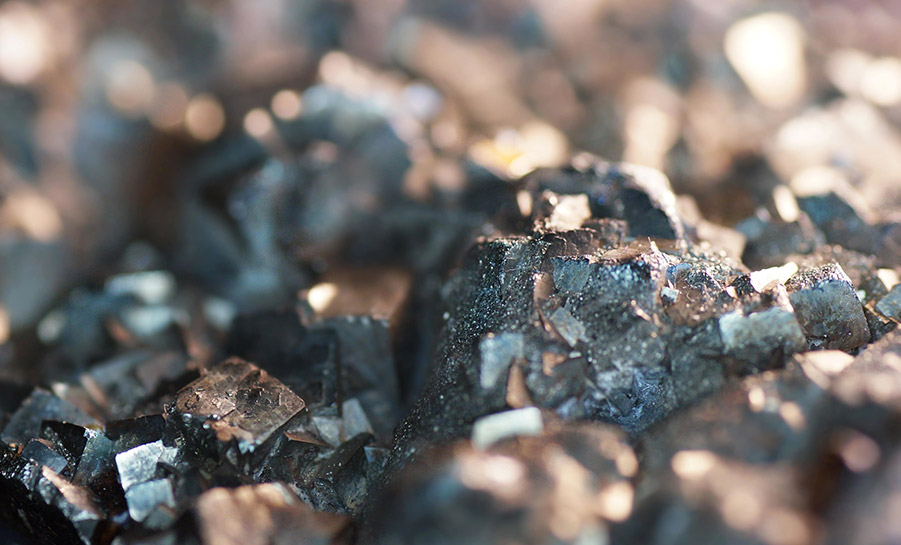Favorite CollLection Triceratops Real Figure Keyring
$11.95
Minerals are the building blocks of the universe. The 3,500 or so named minerals are the components which form rocks, ores, and even meteorites. Minerals are homogeneous naturally occurring solids of inorganic origin. Each mineral species can be defined by its particular chemical composition and its internal molecular (crystalline) structure.


Another characteristic helpful in identification of minerals is the degree to which light will pass through the mineral. If no light will pass through a thin sliver of the mineral, the specimen is termed opaque. When light will pass through and objects on the other side can be seen, as through glass, the specimen is termed transparent. When light can pass through but no image can be seen through the specimen, as with porcelain, it is termed translucent.
Luster is used to describe the reflectivity of light from a surface. This property is fairly consistent for each mineral because it is related to the structure and composition. Metallic luster requires a truly opaque mineral. Submetallic luster is present in mineral which reflects light like a metal but is translucent or transparent. Nonmetallic lusters include vitreous – like a piece of glass; adamantine – like a diamond; resinous – like a piece of resin; pearly – like mother-of-pearl in minerals with a plate-like structure; or silky – like the shimmer of silk or satin seen in minerals with a fibrous structure.
Relative hardness is the resistance of a smooth surface of a mineral to being scratched by another object. Ten common minerals have been set in a scale with 1 the softest and 10 the hardest, to gauge their relative hardness. This is the Moh’s hardness scale. Talc, the softest mineral is hardness 1. Your fingernail has a hardness of about 2 1/2; a knife-blade about 5 1/2. Diamond, the hardest mineral, is hardness 10. A mineral will scratch those items with a lower Moh’s hardness and will be scratched by those higher on the scale.
Every mineral, because of its composition and crystalline structure has a particular density or specific gravity. This is noticed as the difference in weight between two similar objects of different composition. Density is measured as weight divided by volume. For uniformity in mineralogy specific gravity is utilized which is the weight of a sample divided by the weight of an equal volume of water.
Cleavage and fracture are terms used to describe the manner in which a crystal breaks. If the crystal breaks irregularly, this is termed fracture. Cleavage is when a crystal will consistently break along certain crystallographic planes of weakness, resulting in a plane similar to a crystal face. The quality of the cleavage is described by terms such as perfect, imperfect, distinct, and indistinct. Peeling of mica into thinner sheets, or the initial cleaving of a diamond with a mallet and chisel are examples. Some minerals exhibit cleavage in more than one crystallographic direction. The quality in each direction may be the same or may range from perfect to indistinct. Fracture, in minerals without a characteristic cleavage, may also be distinctive. Types of fracture include conchoidal, like that of glass; splintery, even, and uneven, and other simple descriptive terms; and hackly, like the jagged edge of broken cast iron.